fibona Lab
Unfinished—Anti, Ultimate, Transcendence
The Design Challenge of Shaping fibona’s Values
2025.10.31
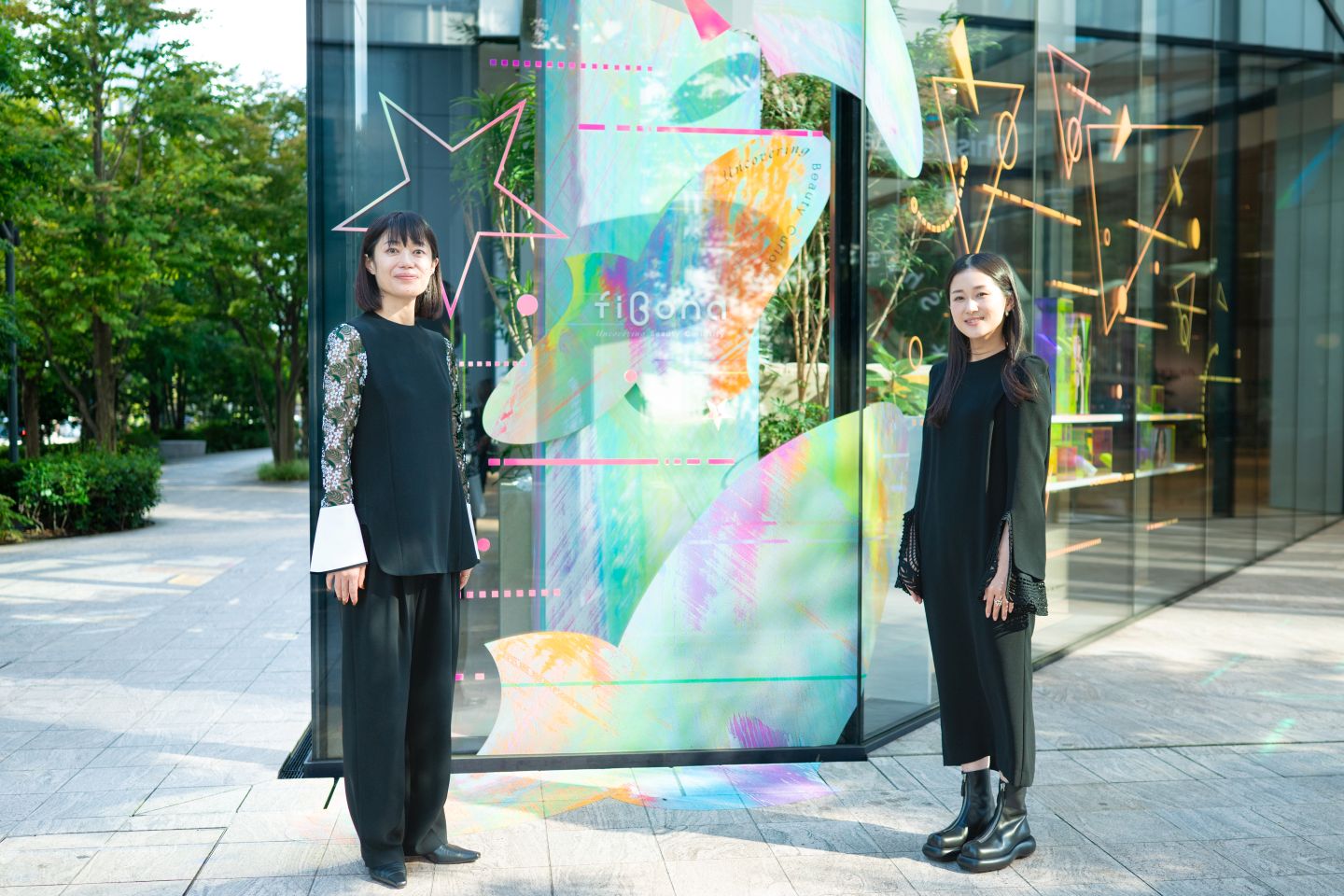
Shiseido Research Center’s open innovation program, “fibona,” has been evolving since 2019 under the theme of “Unprecedented, Co-Creation, Unfinished.”
Starting in 2025, fibona has been releasing a series of unfinished beauty products as a brand dedicated to co-creating what does not yet exist in the world. What unites these products is their commitment to offering new values that excite the world and their unique designs that convey the brand’s philosophy.
Yuko Nakanishi, the fibona brand holder and Group Manager of the Brand Value Development Research Institute, and Misaki Nagatake, a product designer at Shiseido Creative, shared the story behind the creation of experimental product designs that visualize fibona’s philosophy of “new beauty.”
Co-Creating “New Beauty” That Has Never Existed Before
── What led fibona, which started as an open innovation initiative by Shiseido Research Center, to release products as a brand?
Nakanishi:
fibona originally began in 2019 as part of Shiseido Research Center’s “Open Innovation Program.” At the time, the focus was on co-creation with startups, academia, and consumers, as well as the social implementation of research results and the development of co-creation environments. To further strengthen the delivery of research outcomes to society, fibona was established as a brand originating from the research center in 2025.
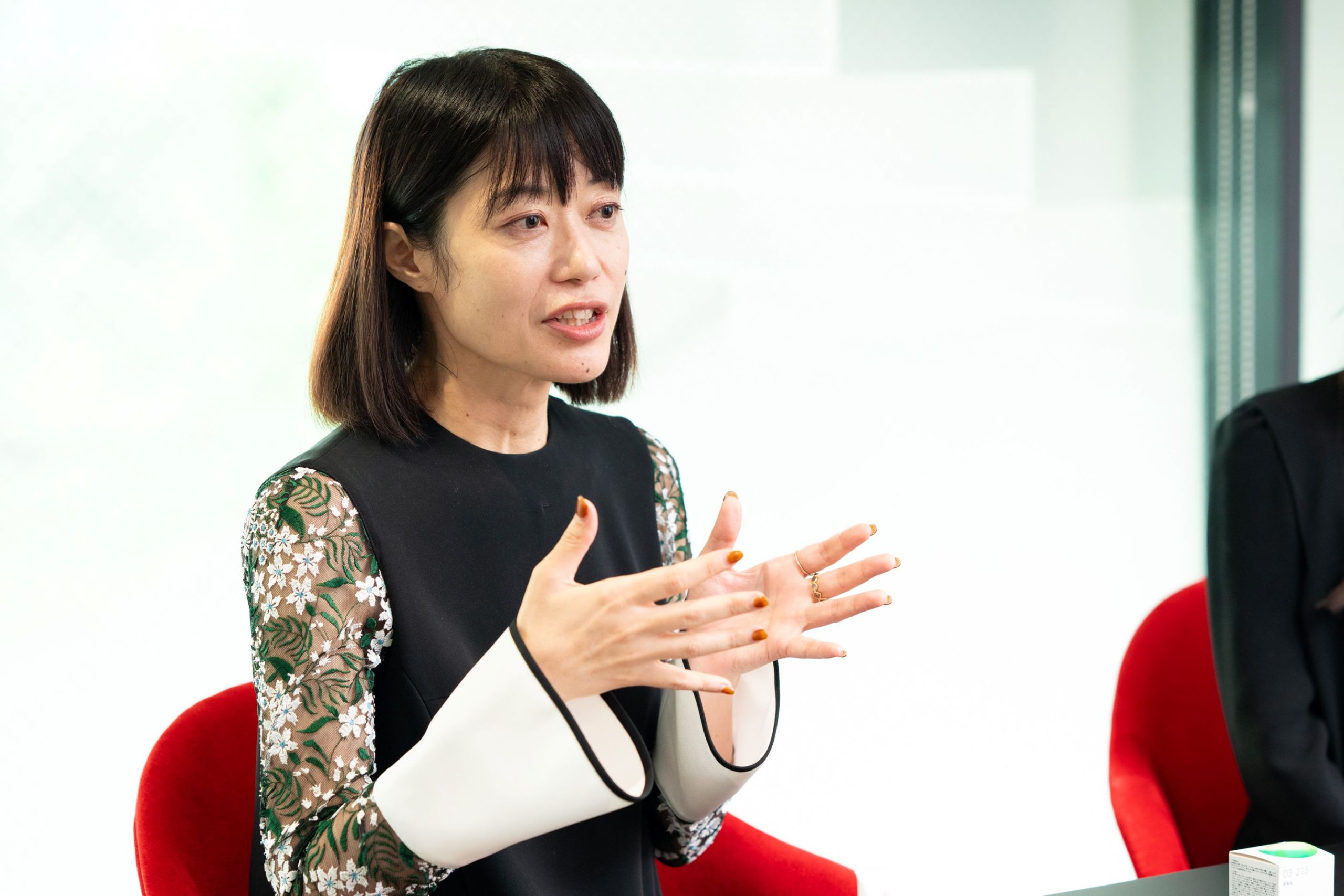
Shiseido Research Center, which will celebrate its 110th anniversary in 2026, is a historic institution that has long valued “essential and innovative craftsmanship.” Having an in-house research and development department is a significant strength, and surprisingly, not many cosmetics companies have.
However, due to the nature of operating a global business, it can be challenging to quickly incorporate trends. That’s why fibona was created—to exist outside of those constraints, enabling agile development and experimentation to create something entirely new.
Note: Agile development refers to a method of development that involves rapid cycles of planning, implementation, and testing.
── What is the concept behind the fibona brand?
Nakanishi:
The core idea of fibona is “unfinished.” It’s about nurturing beauty products that don’t yet exist in the world together with our customers. This co-creative approach is built on three key values: “Anti, Ultimate, Transcendence.”
For example, products that serve as an antithesis to existing cosmetics, those that transcend the boundaries of beauty and cosmetics, and those that are refined to the ultimate level.
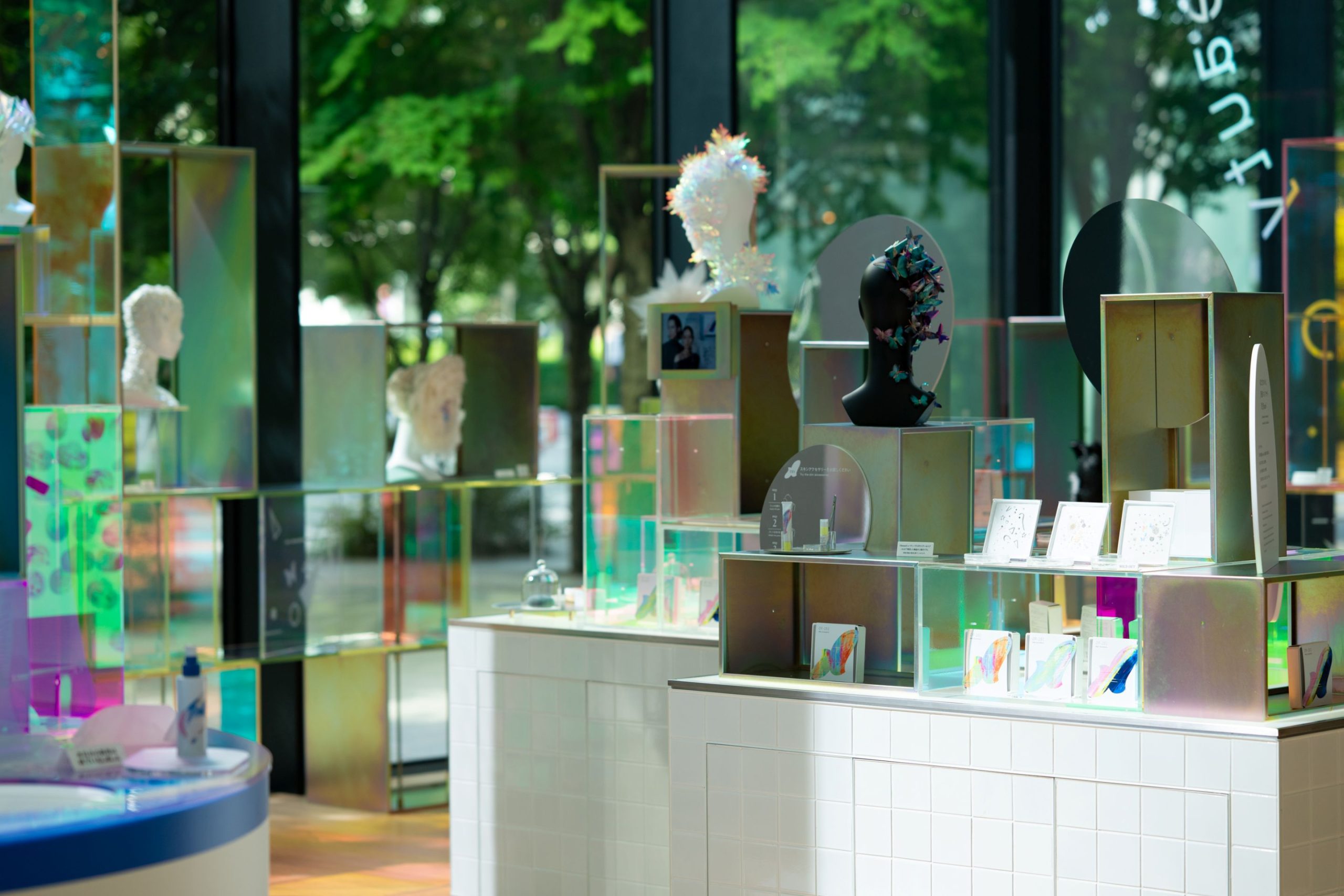
── Could you tell us the origin of the name “fibona”?
Nakanishi:
The name comes from the mathematical “Fibonacci sequence,” which forms the basis of the “golden ratio” often associated with beauty.
When fibona was first established, the starting point was the desire to discover the “essential beauty akin to the golden ratio” in this world. Now, that idea has evolved further into a more ambitious pursuit: “to seek a new golden ratio that has never existed before.”
We want to break free from existing values and discover entirely new forms of beauty. That aspiration is embedded in the name “fibona.”
── Four products have been released under the fibona brand in 2025. What is the development process for these products?
Nakanishi:
The process begins with individual researchers bringing their ideas for products they want to create. From there, cross-functional teams are formed, combining various areas of expertise to refine the value of each idea. Once the product is conceptualized, it is brought to life as a finished product through the power of design, led by our product designer, Ms. Nagatake.

“Anti, Ultimate, Transcendence”—Designing fibona’s Values
── Ms. Nagatake, you are responsible for all of fibona’s designs. How did you feel when you were first approached for this role?
Nagatake:
Being entrusted with fibona’s design was a significant challenge for me. I usually work on designs for global products with production scales ranging from tens of thousands to millions of units. In contrast, fibona’s products are produced in small batches at the research facility in Minato Mirai, making them incredibly unique.
While there are constraints, the environment allows for expressions and techniques that are difficult to achieve in mass production. I found this aspect of fibona deeply appealing and decided to pursue designs that are only possible within this brand’s framework.
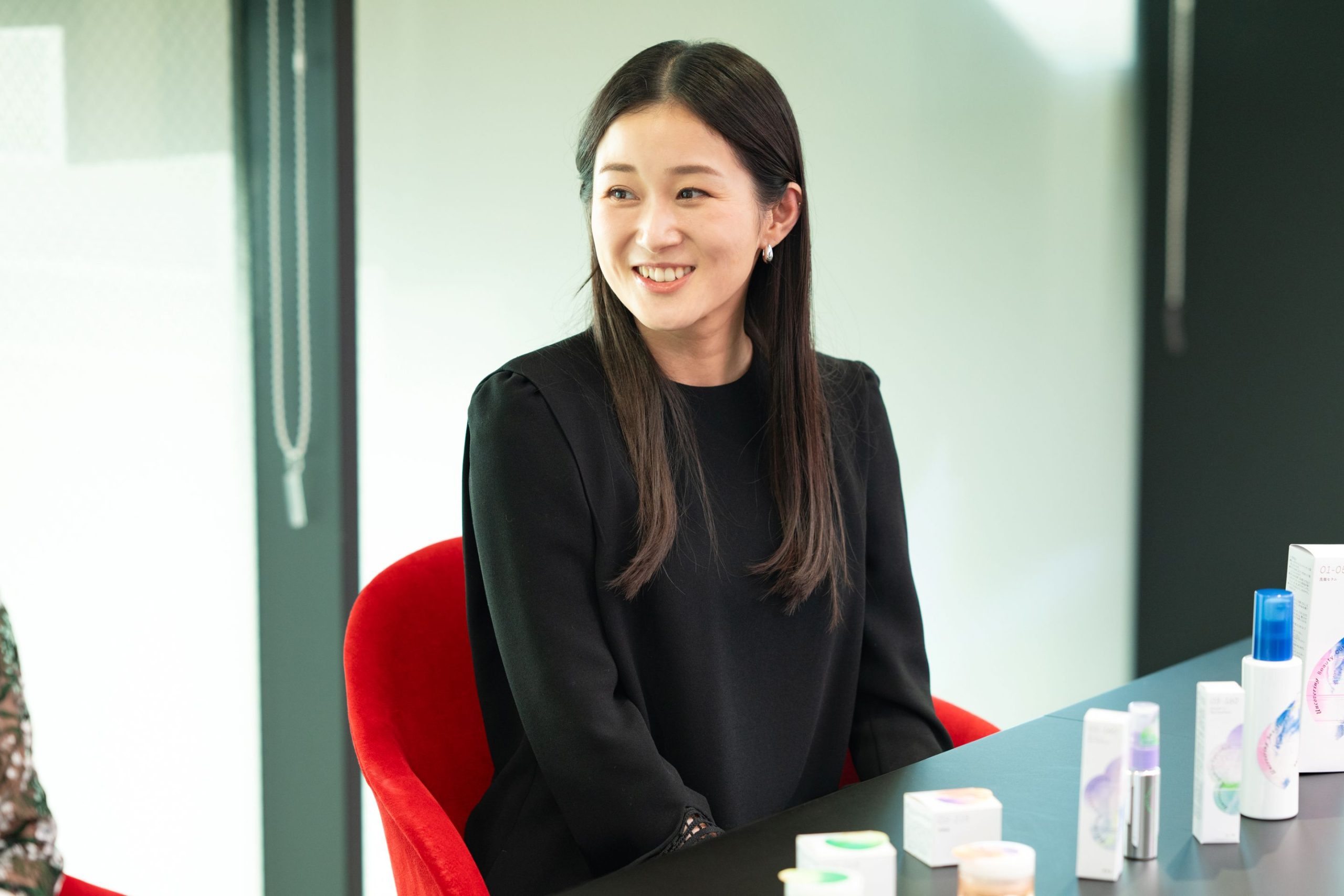
── What is the design concept for the fibona brand?
Nagatake:
The values of “Anti, Ultimate, Transcendence” shared by Ms. Nakanishi were the foundation for building the design axis. From there, I developed the concept of “Beyond the Beauty,” which aims to transcend conventional notions of beauty.
I wanted to express the “truth of beauty” symbolized by the Fibonacci sequence and combine it with fibona’s challenging elements, such as “unfinished, advanced technology, and participation.” The goal was to create a design that offers an unprecedented experience.
Additionally, the products feature the tagline “Uncovering Beauty Curiosity.” The brand logo is intentionally placed in a subtle position, as fibona values its existence more as a “community” or “co-creation space” rather than a traditional brand.
Nakanishi:
I feel that Ms. Nagatake’s designs truly visualize fibona’s values.


Unleashing Product Individuality Through Design Challenges
── Four items have been released so far: “Skin Accessories,” “kahadasho,” “Cleansing Serum,” and “Stress G Harmonizer.” What are the key points in product design?
Nagatake:
The container shapes are based on basic forms, but by adding unique labels and design elements, we create a balance between stillness and motion, resulting in a dynamic impression.

Each product’s packaging and label design are intentionally different, incorporating the “catenary curve,” a shape derived from natural laws. This curve, formed when a rope is suspended at both ends, is considered one of the most beautiful shapes—a “truth of physics,” so to speak.
The designs that extend beyond the container symbolize fibona’s philosophy of “transcending the truth of beauty.”

(Skin Accessories)
── Were there other design proposals initially?
Nagatake:
Yes, there were alternative designs with a more subdued tone.
Nakanishi:
In the end, we presented the options to the management team, and the current design received overwhelming support. When they saw the design, everyone said, “Let’s go beyond the boundaries! Let’s take on the challenge!” (laughs).
── The color schemes are also unique and striking.
Nakanishi:
fibona has a design code for the brand, and within that framework, Ms. Nagatake has boldly expanded the color palette while maintaining balance.

Nagatake:
Gray symbolizes “the truth of beauty,” while the colorful hues of a hologram represent “challenge.” We adjust the ratio to match the individuality of the product, so that the challenge becomes an accent to the base truth of beauty.
For example, “Skin Accessories” features a painting-like touch, similar to makeup applied to the face. “Kahadasho” is designed to evoke the image of fragrance spreading gently. “Cleansing Serum” uses a marble pattern based on actual foam photography, while “Stress G Harmonizer” incorporates cloud-like imagery inspired by foam photos.
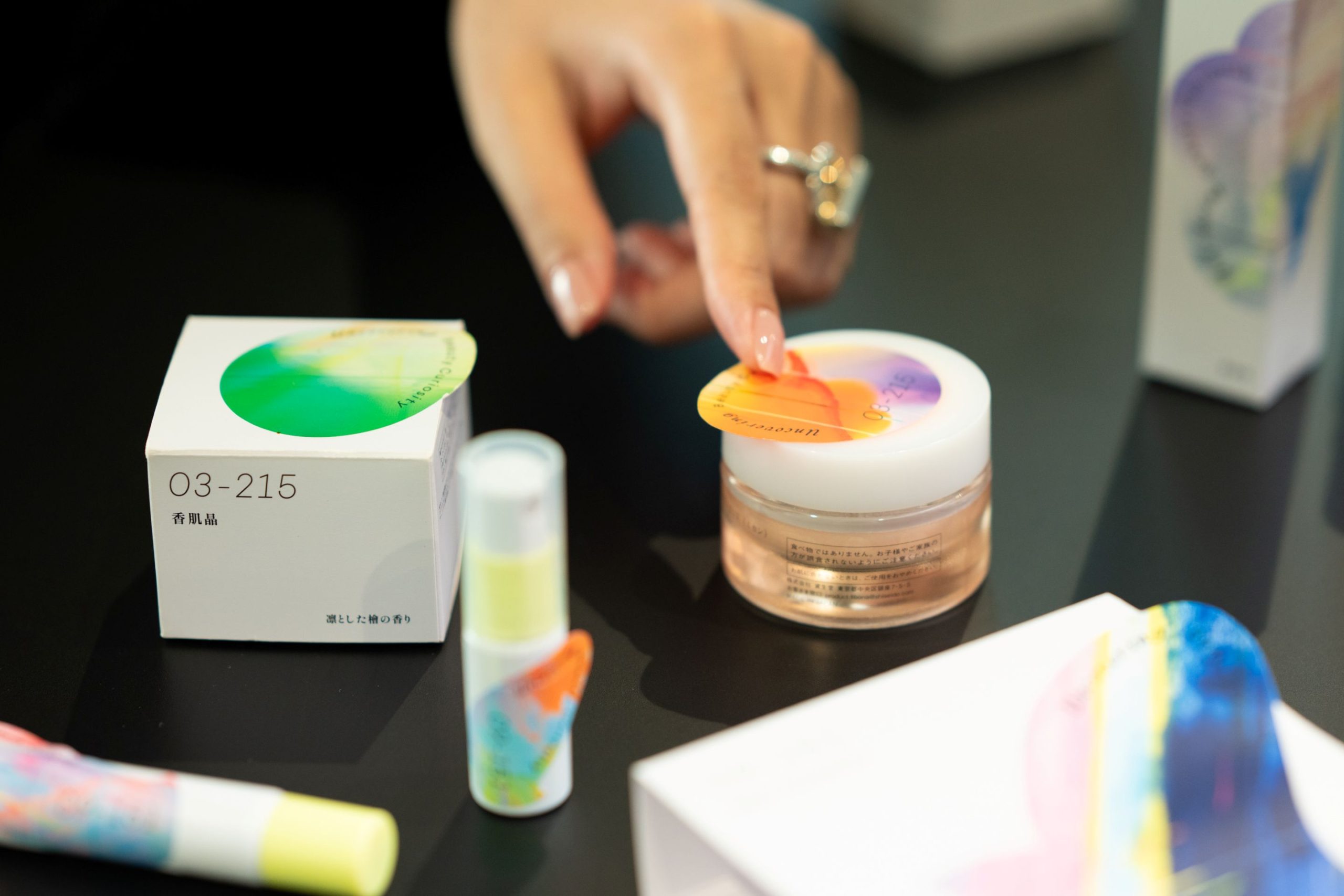
(kahadasho)
── The horizontal lines and numbers like “03-215” on the products are also intriguing.
Nagatake:
The horizontal lines are glitch lines created from accidental programming noise. By combining analog art elements with the “accidental destruction” of digital processes, I aimed to merge fibona’s “truth of beauty” with its experimental nature.
I collaborated with a glitch expert to generate noise, outputting hundreds of data samples and selecting the lines that best suited each product.
Nakanishi:
The numbers on each product represent meaningful figures chosen by the researchers involved in their development.
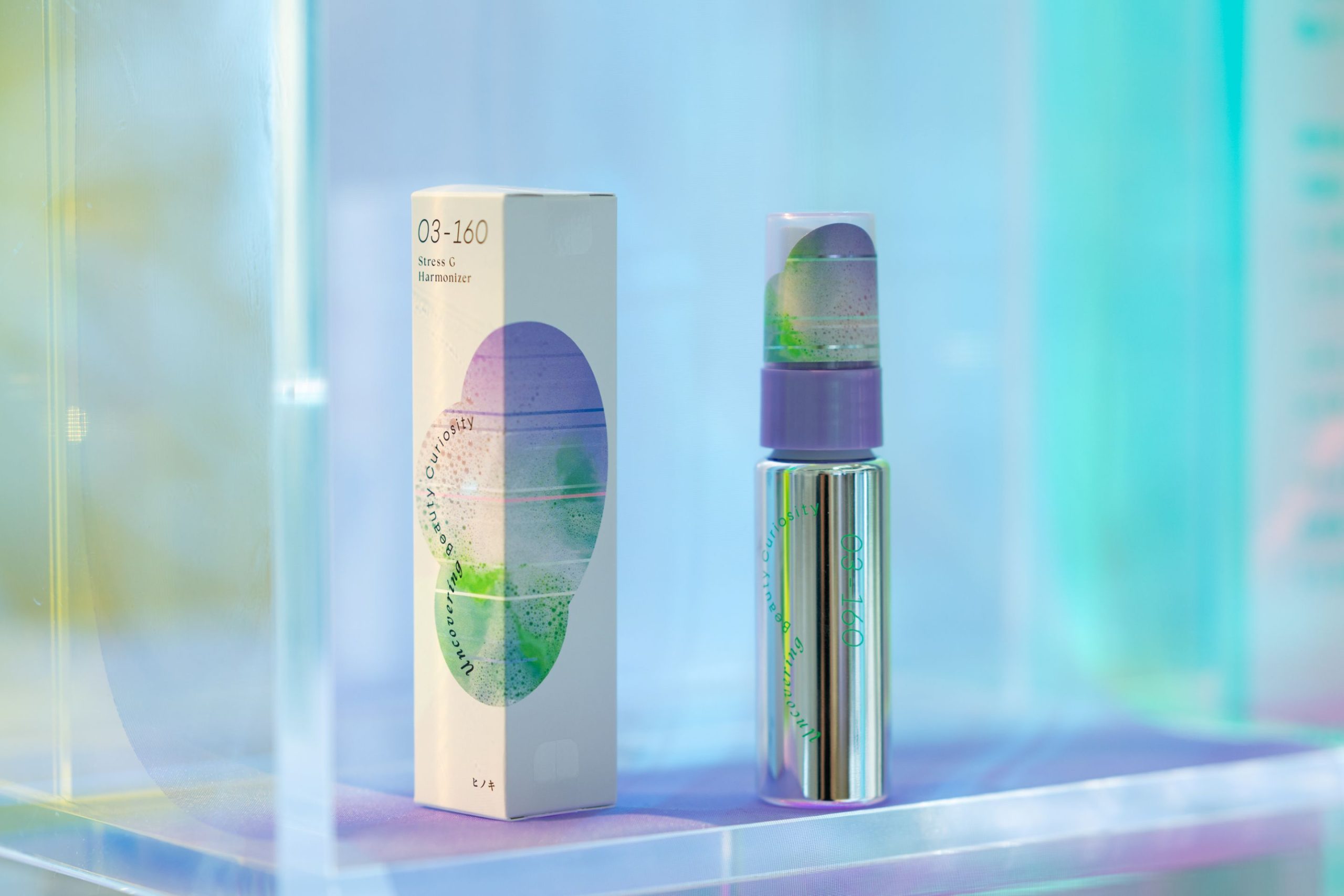
(Stress G Harmonizer)
──Were there any particular challenges in designing the products?
Nagatake:
With fibona’s products, it’s crucial to express individuality within limited elements. Therefore, it was necessary to carefully coordinate with the exterior design department and factories to align on what could and couldn’t be done. That process might have been the most challenging. We also struggled with how to create something of high quality within a tight schedule (laughs).
I personally searched for partner factories, collaborated with the exterior design team at the research institute, visited the sites, and requested fine adjustments to the printing. There were times when I made requests knowing they might be difficult to fulfill, but we moved forward by persistently building up each step, no matter how tedious it was.
Nakanishi:
Nowadays, as we’ve built long-term relationships with our partners and factory members, there are more instances where things progress smoothly based on trust, with people saying, “If Nagatake says so, then let’s do it.”
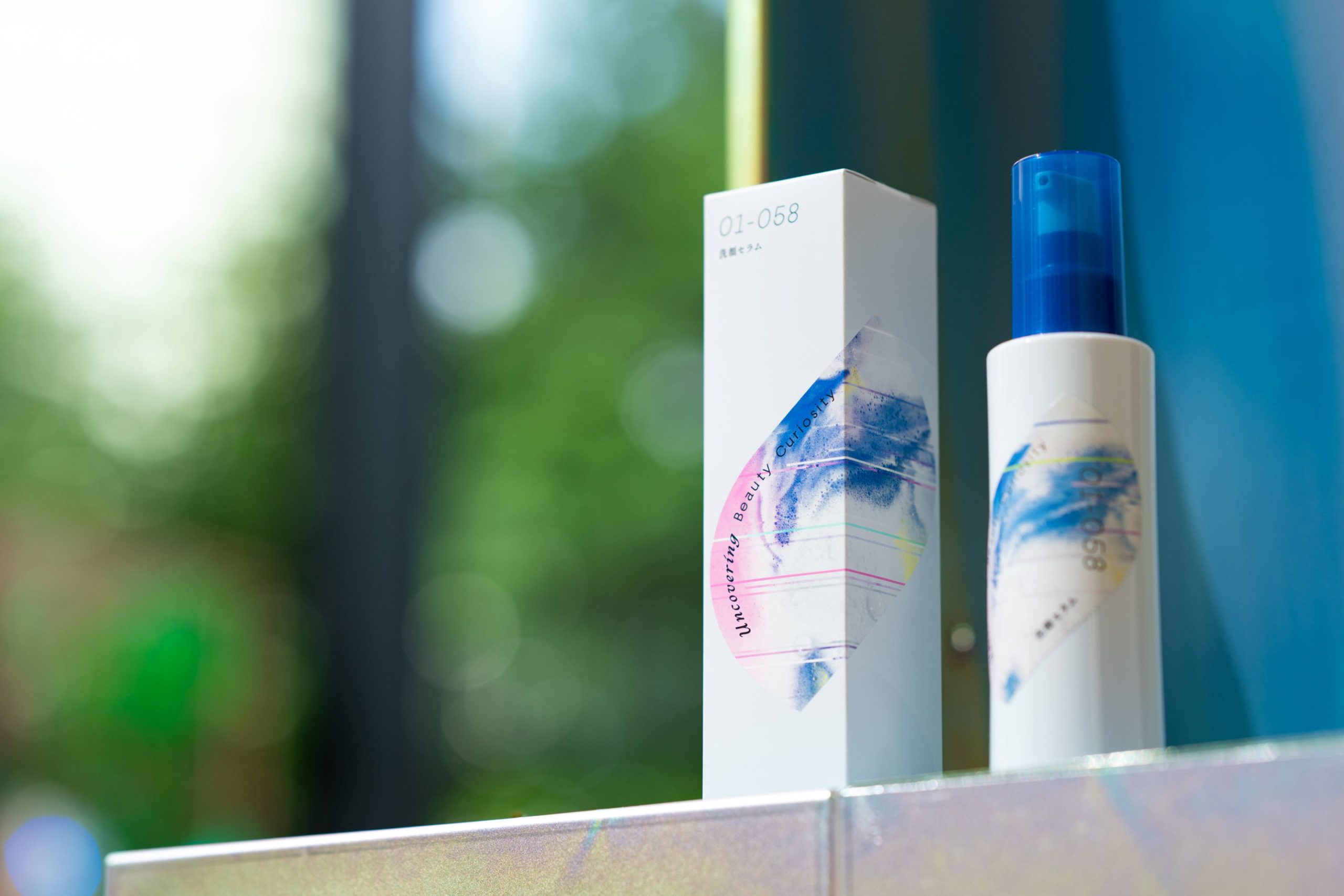
(Cleansing Serum)
The Future Unfolding from fibona’s “Unfinished” Products
── The fibona brand was born from meticulously designed products and diligent collaboration with factories. Ms. Nakanishi, how does it feel to see research-based products take shape?
Nakanishi:
Seeing liquid substances that were once in test tubes transformed into beautifully designed products on store shelves is always a fresh and moving experience.
The value and excitement of creation are something I feel every time, but the key is how the team shares the brand’s philosophy and development direction to move forward on the same axis. In this regard, Ms. Nagatake’s deep understanding of abstract concepts is incredibly reassuring.
Designers and researchers exchange words, moving back and forth between “abstract” and “concrete” to bring ideas to life. Through this process, researchers themselves gain a perspective of “designing from the concept.”
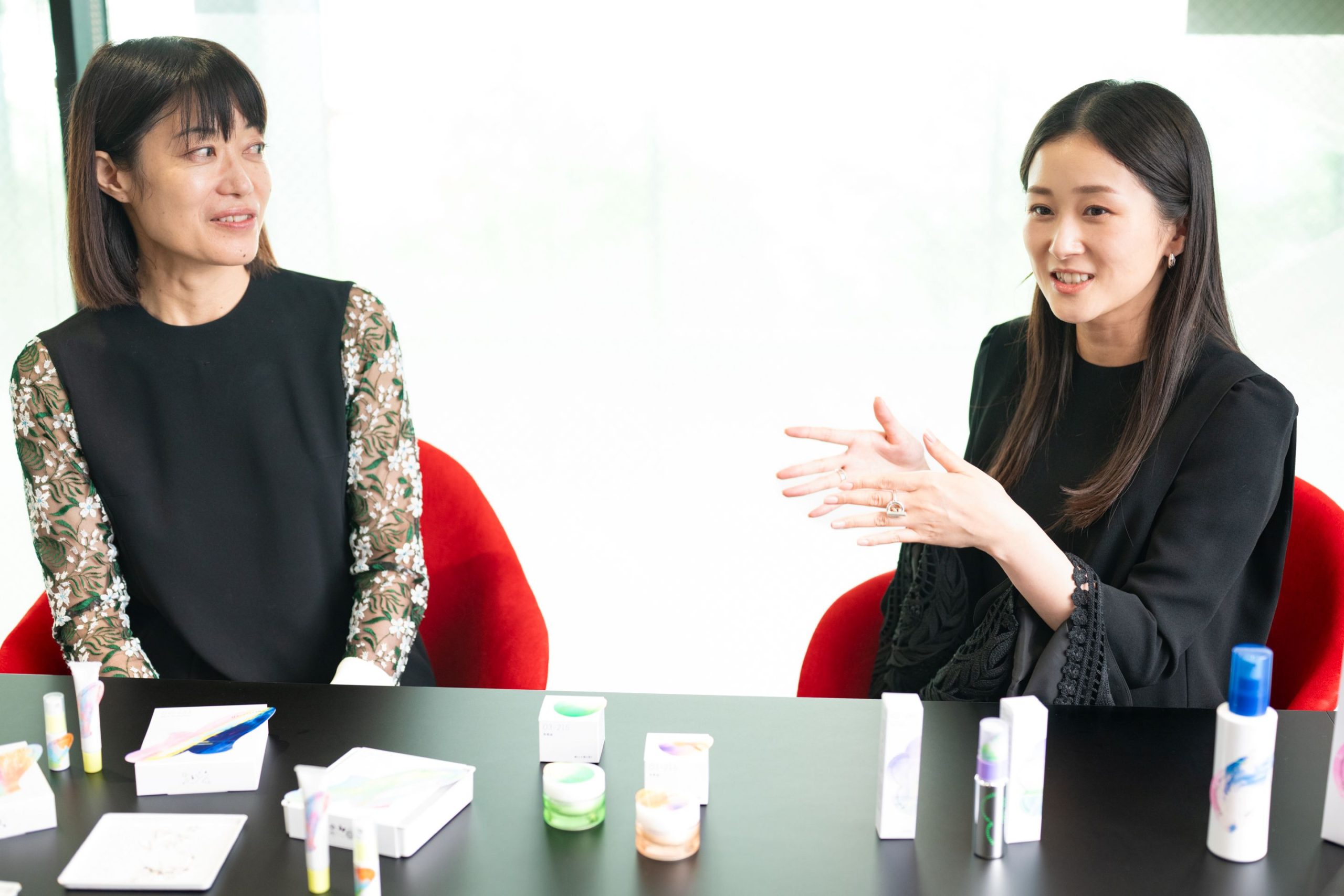
─ How do you envision the future of fibona?
Nakanishi:
Since the beginning of fibona in 2019, we’ve cherished the theme of “questioning the fixed concepts of beauty.” We hope that the idea of enjoying one’s unique beauty, free from rigid rules, will gradually spread through fibona.
We also look forward to meeting people in stores who share their thoughts, such as “I’d love to use a product like this,” and seeing new connections emerge from the online community “Club fibona.” We aim to continue challenging the traditional boundaries of manufacturers.
Nagatake:
While Shiseido’s main brands are designed to reach a broad audience, fibona resonates more with individuals who have unique perspectives and sensibilities. That’s why I want to keep challenging myself with new expressions. It would be wonderful if fibona’s initiatives eventually influence mass brands and lead to new standards.
(End)
